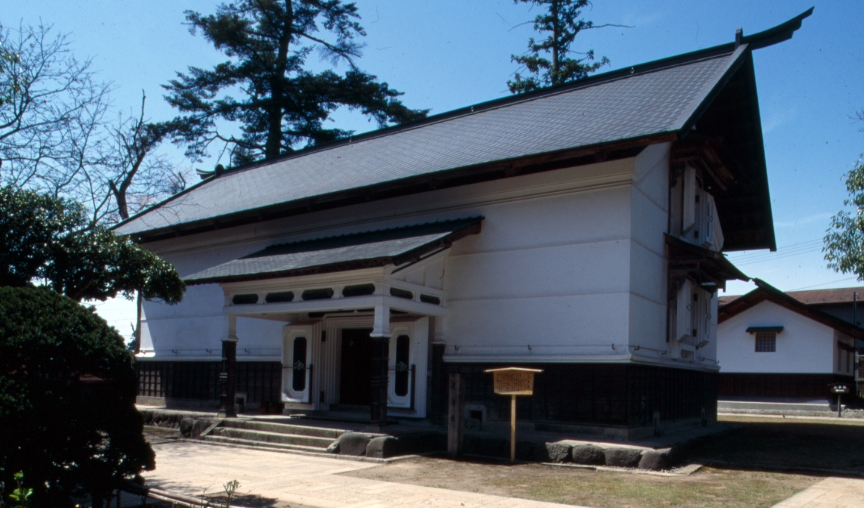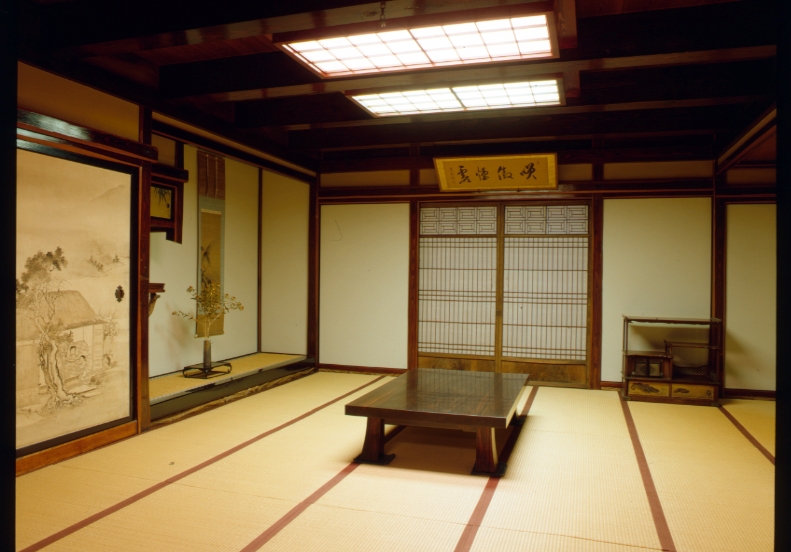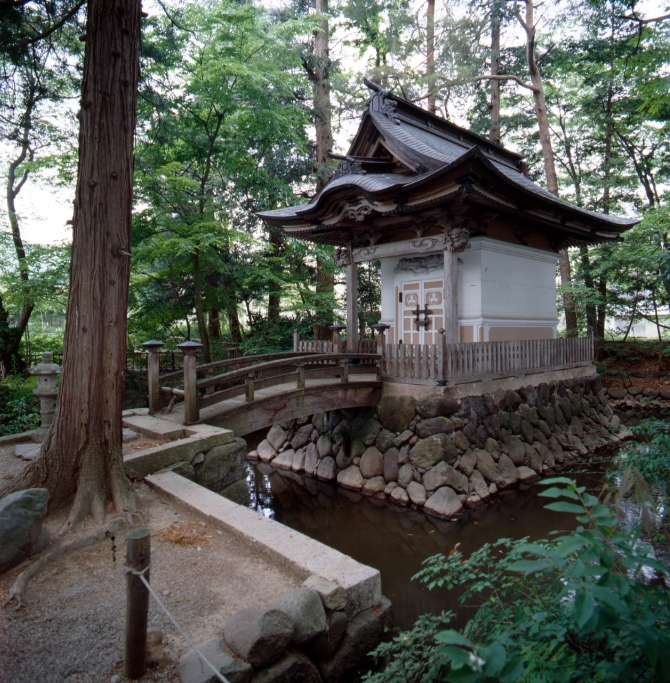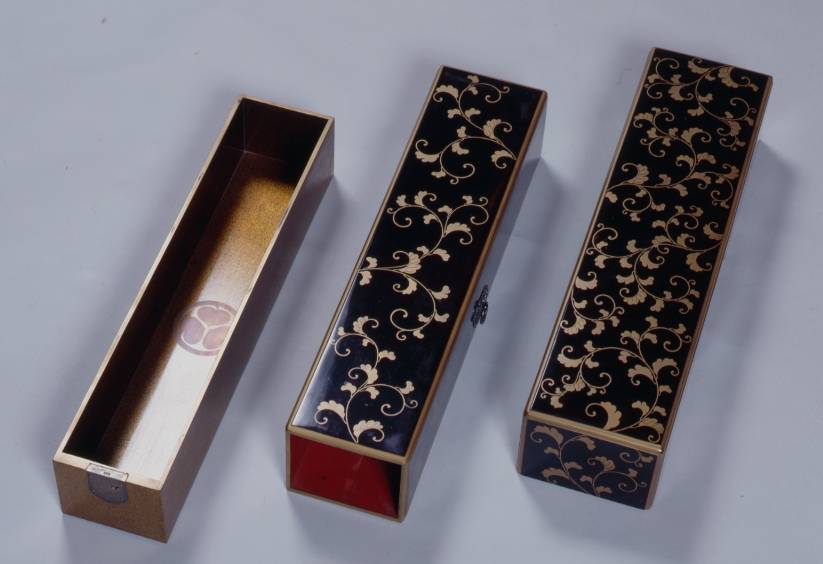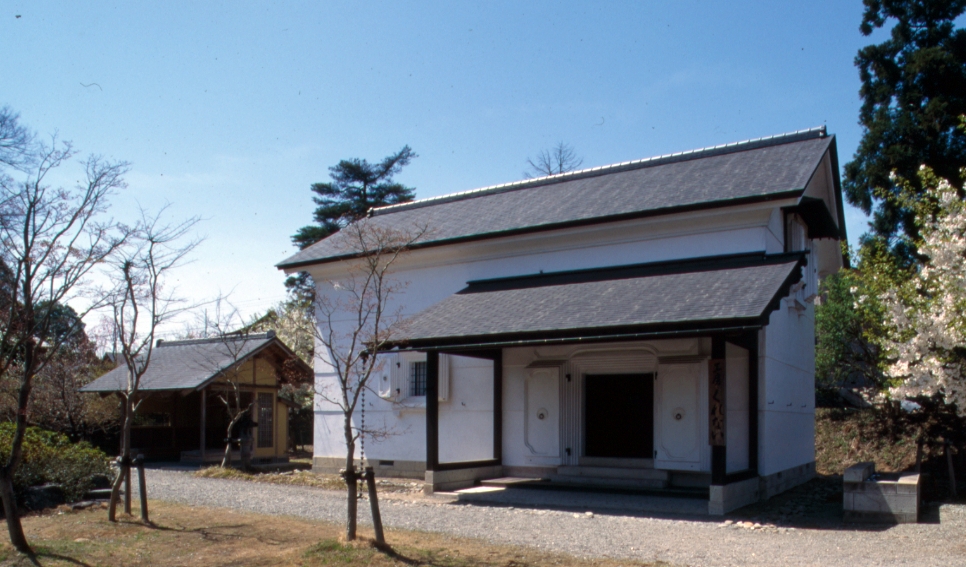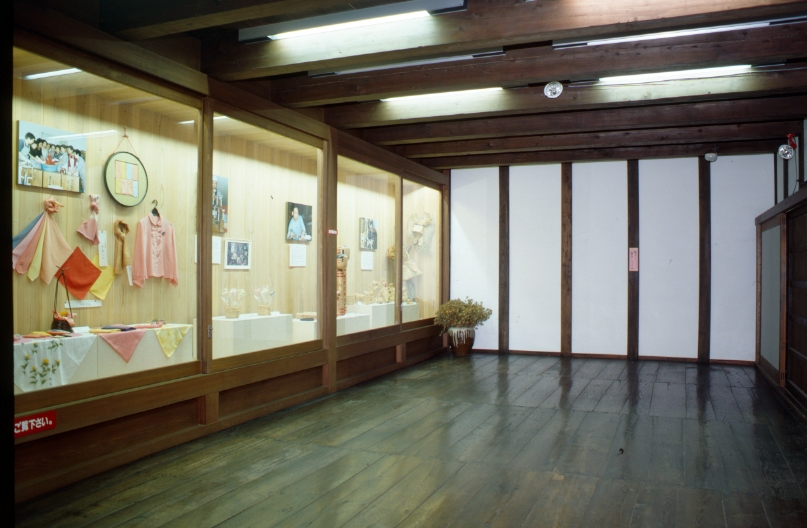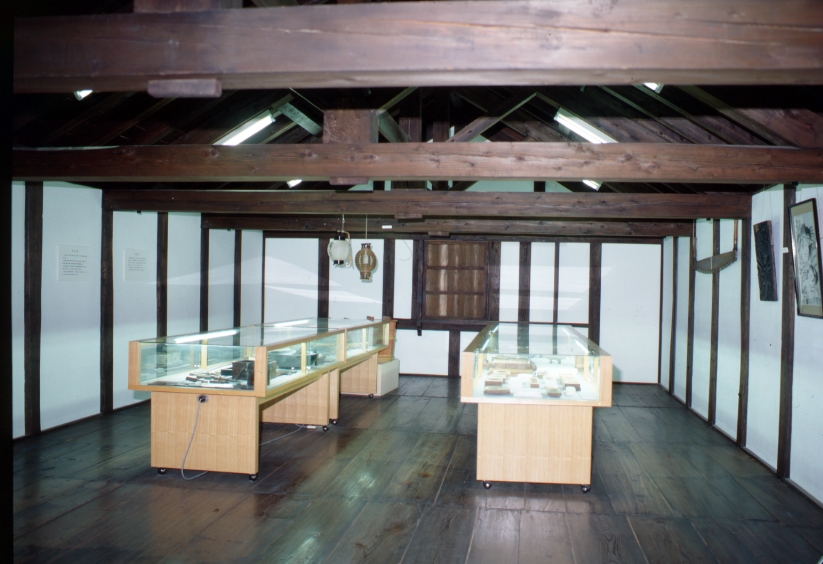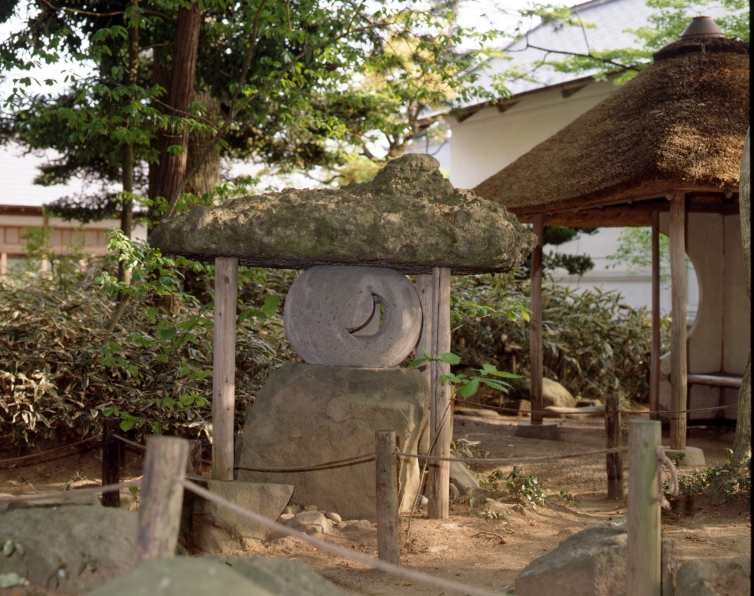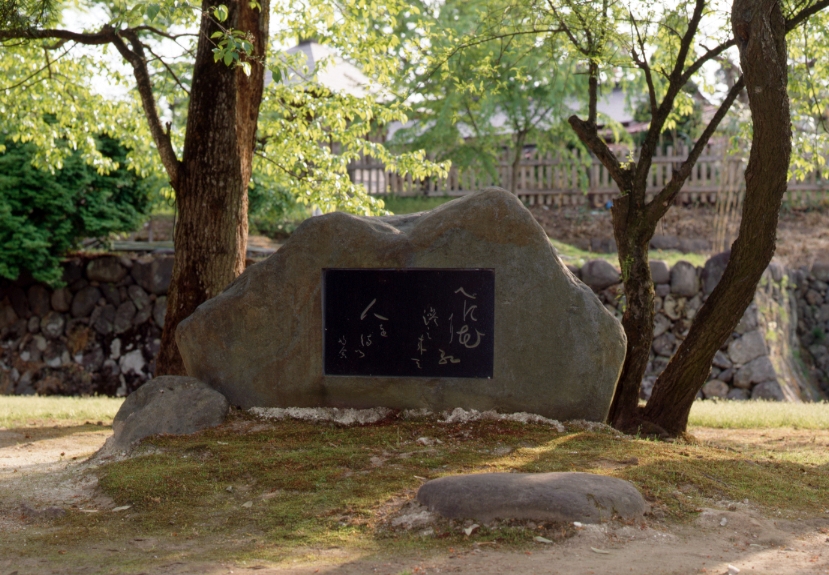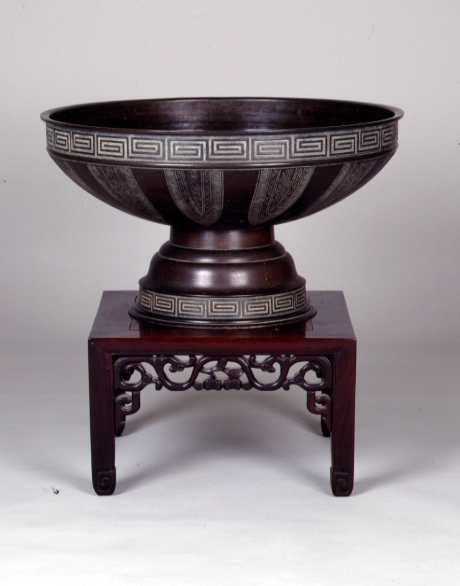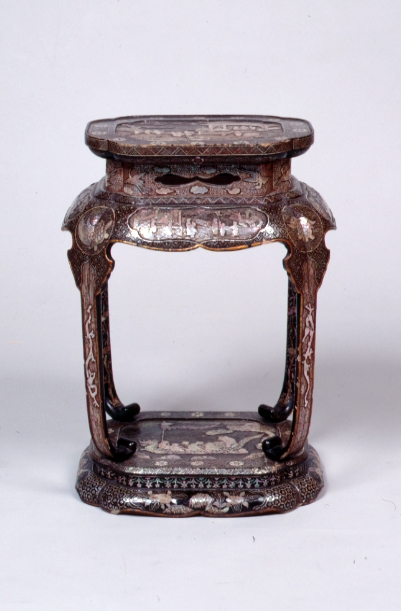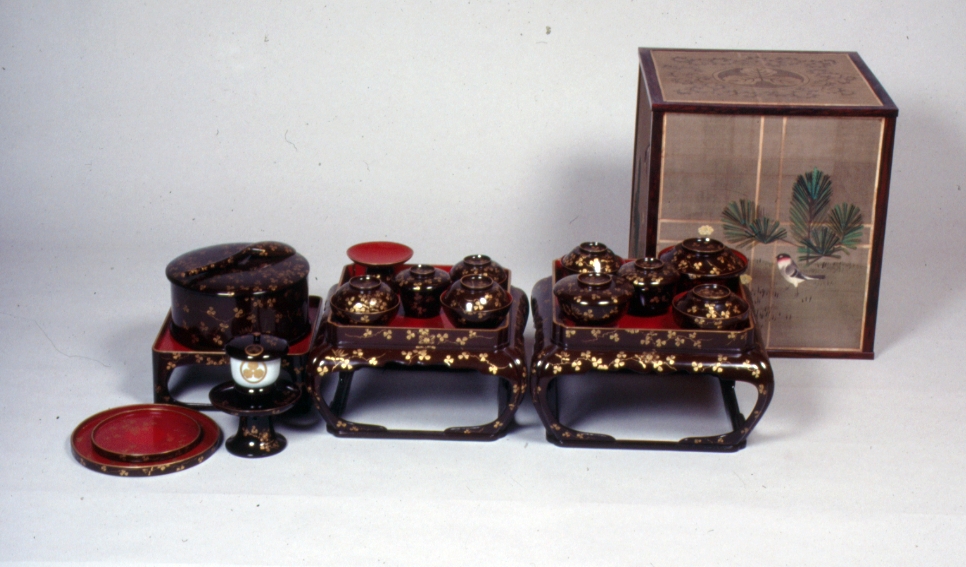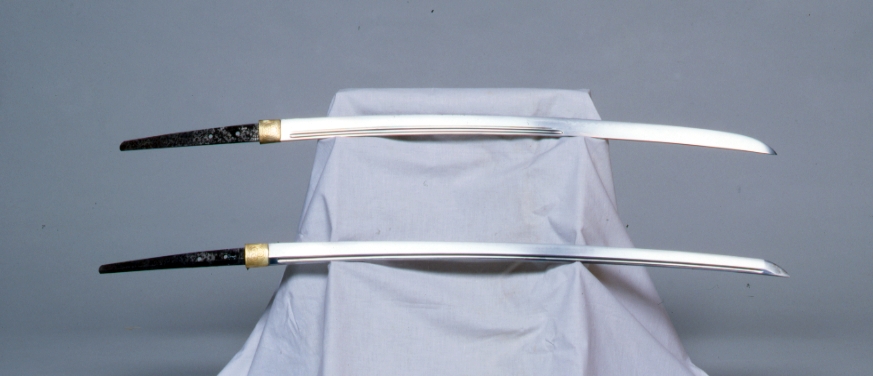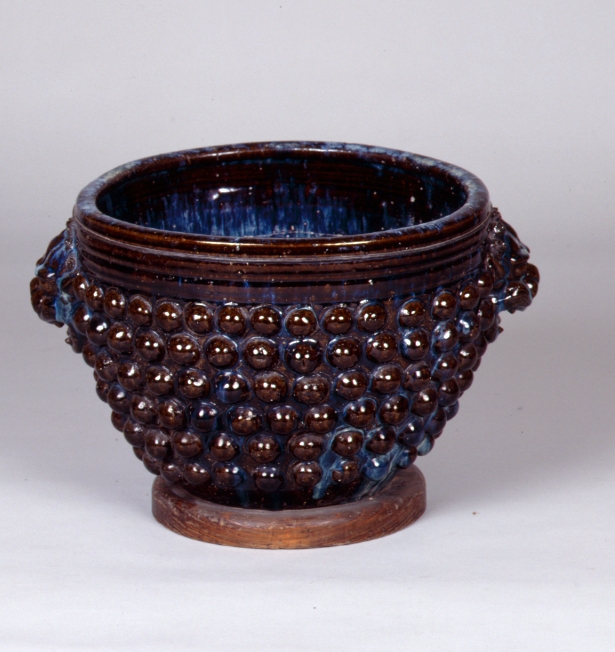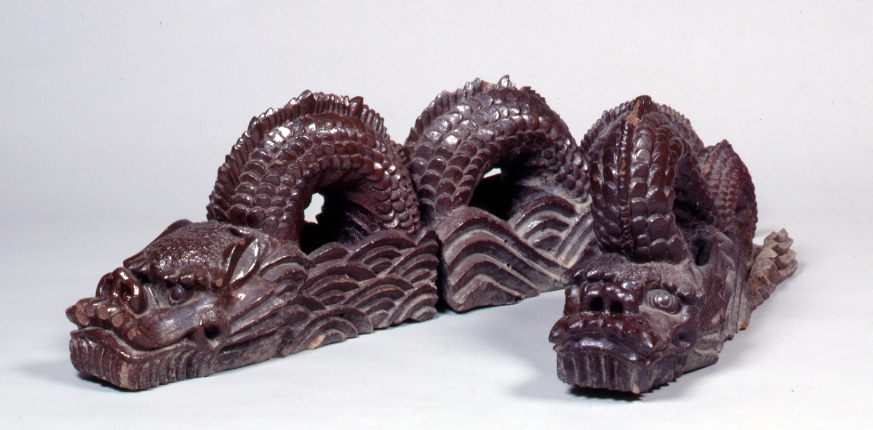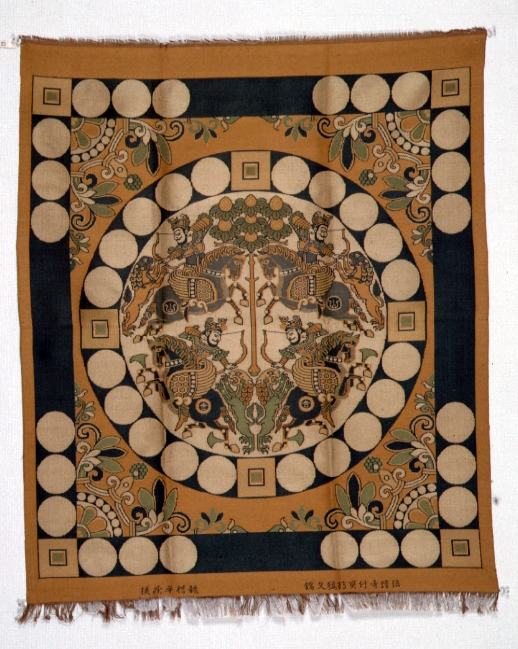The Benibana Museum (The Safflower Museum)
3. Horigome's Former Residence (旧堀米邸)
(1) Nagaya-mon (長屋門)
This front of the residence was built at the end of Edo period. The wall was once processed with red oxide of iron conveyed from Kyoto and at present it is restored by the same process of what it was. In those days, the style of Nagaya was permitted for the head of a village and the same status of farmers.
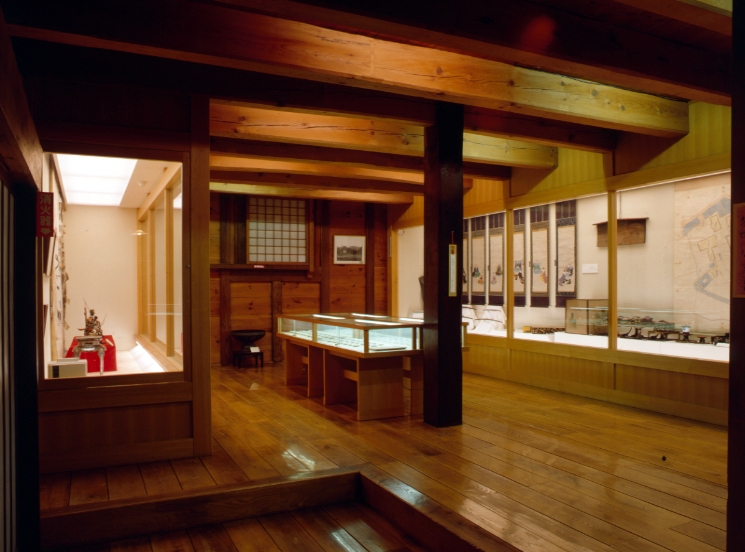
|
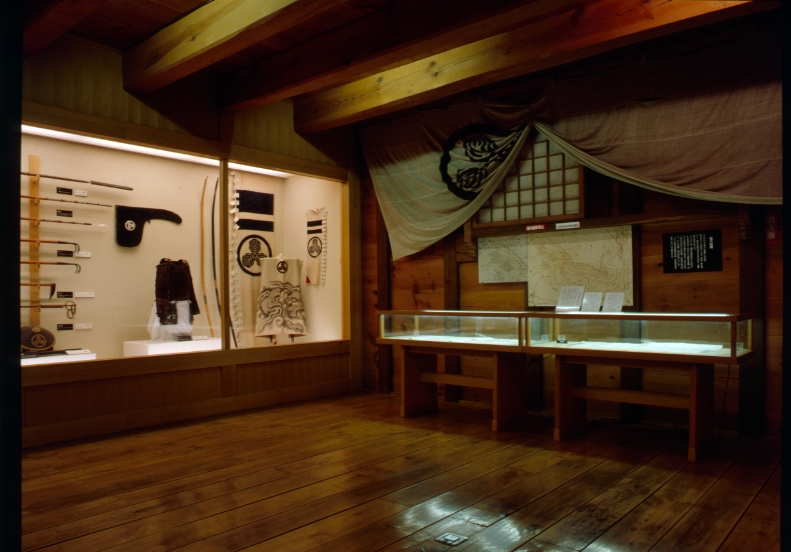
|
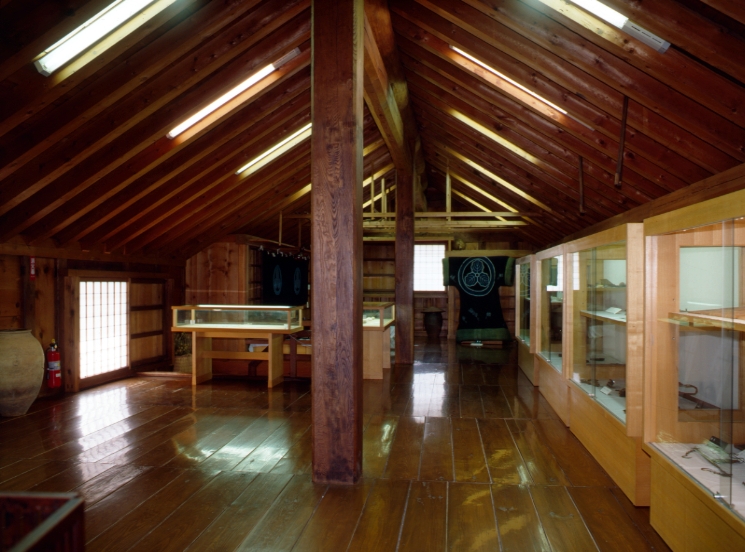
|
| 1st floor | 1st floor | 2nd floor |
(2) Musha-gura (a warehouse of weapons) (武者蔵)
This warehouse was constructed in 1853. From 1863 to 1868, the house was used as a house of arms of agrarian soldiers.
(3) Zashiki-gura (座敷蔵)
This house (godown) was built in the style of the middle age of Edo period. In the residence, this was called No.1 godown among six ones. The house was one of the oldest house in this Town, and in later time this is restored as a guest room. The carvings are seen at the bottom of an alcove and its pillars are ornamented by the peel of wood.
(4) Goshuin-gura (御朱印蔵)
This house was the warehouse to preserve the authorized documents which were given by the Shogunate. The documents were inherited by the Shinzan Shrine (新山神社) of neighboring Yoshikawa (吉川) Village. Norikatsu Shirobe Horigome, the sixth owner of the residence was permitted to built it in 1863. The godown is Irimoya style (唐破風向拝付入母屋造) and Jinsaku Matsuda as a head carpenter, Tokichi Hosoya as a planner and carver in front, Bungoro Takayama took part in the construction. They are all native-born master craftmen.
(5) Studio Kurenai (工房くれない)
This studio takes advantage of benibana dyeing practice, painting kokeshi dolls and a straw crafts exercising.
(6)Sawabata Kobuishi (沢畑こぶ石)
The stone usually called "Sawabata-no-Kobuishi", which seems to have been erupted presumably 2,000,000 or 3,100,000 years ago. On the surface of it, moss is easy to grow. This makes the stone tasteful especially in the area of Kyoto and Osaka. Even today, in Kahoku Town, it is available for Hibukuro (火袋) or Chozubachi (手水鉢) as a stone craft.
(7) Stone Monument of Haiku (俳句)
On the monument, a line of haiku by Kyusha Hosoya (細谷鳩舎) who was born in Kahoku Town is carved. The line tells that in the season of picking benibana, a yellow tint just comes faintly in a flower. And its figure are like a young woman who is waiting for her lover.
(8) A Bronze Flower Bowl and a Stand made in China with Lamina Decoration sent by the Shiroishi Clan.
Once the Horigomes loaned money to some Daimyos (大名). Daimyos borrowed money, but when its return was impossible, they brought such treasures as a mortgage. The family called them "a gift from the lords" (拝領品).
(9) Meal Sets (御膳類)
These sets were usually used for the guests like a local governor (代官) or an officer on patrol (巡検使). They put a painted paper box which was painted as a seasonal picture on them.
(10) Sawabata Swords (沢畑刀)
The sixth owner of the family, Shirobe invited a sword forger Morikuni (守国) who was born in Date (伊達) and let him forge many swords at the smithy of the backyard of the residence. The swords which were forged at that time were carved as "Ushu-Yachi-Fujiwara-Katsumitsu" (羽州谷地住藤原勝光). The swords almost belonged to Keio period (慶応年間).
(11) Sawabata Pottery (沢畑焼)
In 1871, the sixth owner of the Horigomes built a kiln at Hoshimori (法師森) and used its soil as potter's clay. And also he invited five ceramists of Sendai-tsutsumi potter (仙台堤焼) to product daily wares called Sawabata pottery. The periods of its production covered about ten years, but some unglazed conditions were forced to stop its production. The kiln is still remained even now.
(12) Shishikari-monnishiki ( <Houryuji Temple> replica ) (獅子狩文錦 <法隆寺> 複製)
This tapestry is said to have been sent by Youdai (煬帝) of Zui (隋) Dynasty to Ono-no-Imoko (小野妹子) who was sent for as a Japanese envoy to China under the order of Shoutokutaishi (聖徳太子) at the head of 7th century. This is secretly stored in the Yumedono (夢殿), Houryuji Temple. Heizo Tatsumura (龍村平蔵), who is a remarkable textile worker, spent a lot of time to restore this replica. A technique of benibana dyeing can be found also in this tapestry.

